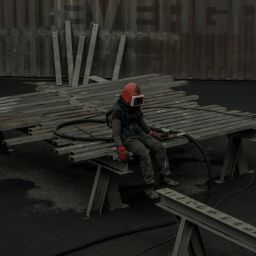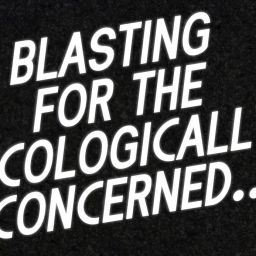Can You Soda Blast a Complete Engine?
Over 1 million employees in the United States are at risk for a lung disease called silicosis. Of that number around 100,000 of them are employed as sandblasters. Sandblasting is a type of abrasive blasting that projects small particles of silica to clean a surface like a complete engine.
Sandblasting releases small particles of crystalline silica into the air which can harm the environment and individuals. But luckily, there are safer options for abrasive blasting.
Since traditional silica sandblasting presents so many risks, people are turning to safer blasting materials. One of the best options is using sodium bicarbonate or baking soda. Soda blasting is less abrasive and more environmentally friendly.
As soda blasting becomes more common many people want to know the benefits and limitations of this blasting method. One of the most frequently asked questions about soda blasting is: “can you soda blast a complete engine?” If you want an answer then check out our guide.
Soda Blasting: An Overview
Soda blasting is a type of abrasive blasting used for cleaning, stripping, and preparing surfaces.
It works by using compressed air to push a stream of abrasive material in this case, sodium bicarbonate, against the outside of an object’s surface. This abrasive material removes contaminants from the object. In some cases, it can gently reshape an object’s surface.
Sodium bicarbonate, or baking soda, is one of the softest blasting materials available. This makes soda blasting milder than other forms of abrasive blasting and less likely to damage the outer layer of the object.
Because soda blasting is so mild it is commonly used when preserving an object’s surface is important. It is utilized in industries where surface integrity must be maintained or when a part is shipped or cleaned.
In manufacturing, soda blasting is used for production mold cleaning, industrial cleaning of grease, oils, and burnt carbon. In commercial contracting, it is used to remove smoke damage, clean mold, and strip graffiti.
Soda blasting is also used in the food and beverage industry. Because baking soda is food safe so it can be used to clean surfaces without fear of contamination.
The History of Soda Blasting
People first began using Soda blasting in the late 80s to restore the Statue of Liberty. In 1982, the U.S. began a historical restoration project for the Statue of Liberty’s hundredth anniversary. During the restoration, the engineers ran into a problem.
They needed to remove the coating of coal tar without harming the copper layer underneath. After trying numerous abrasive materials they found that baking soda was the ideal material for the project. Soda blasting had the ability to clean and coat the statue without damaging the surface.
The project required over 100 tons of baking soda. After the renovation, soda blasting became wildly popular.
Can You Soda Blast a Complete Engine?
Can you soda blast an entire engine? The answer is a little complex. Yes, you can soda blast a complete engine but we don’t recommend it.
This is because soda blasting uses highly pressurized water and air to clean surfaces.
The pressure can push small particles through seals and into the engine. As soon as these particles enter the engine they can cause serious damage. These particles can erode the gears, damage bearings, and block the oil galleries.
Though soda crystals can damage an engine, they are less harsh than other abrasive materials.
If you want to try engine soda blasting the best method is to disassemble the engine and clean it out manually after blasting.
Soda blasting works for removing dust on a complete engine’s surface. But might do so at the expense of the engine functioning.
Benefits of Soda Blasting
The biggest benefit of soda blasting is its environmental impact.
When dealing with standard abrasive media you run the risk of increasing environmental pollutants. For example, when using sand as a blast media the process emits silica into the air. Silica is considered an environmental pollutant.
Other abrasive materials like iron, coal, nickel, and iron may not contain silica but often include heavy metals that harm the environment.
The United States Hazardous Materials Identification System gives sodium bicarbonate a ‘0’ rating. This means that it is not caustic or corrosive and releases no harmful emissions into the environment. It is entirely biodegradable and has a mostly neutral pH balance.
Sodium bicarbonate also produces less waste than other abrasive materials. Overall it produces a fraction of the waste that traditional blasting creates. This makes it easier to clean.
The disposal process is also simple. Because sodium bicarbonate is not considered a controlled substance you can transport it to a landfill rather than making special disposal arrangements.
The abrasive blasting industry uses the Mohs scale to measure hardness. This is a scale that measures the resistance of a material compared to 10 reference materials on a scale of 1 to 10. With 10 being the hardest represented by diamonds and 1 being the softest represented by Talc.
Sodium bicarbonate is a 2.5 on the Mohs scale making it one of the softest abrasive materials available. This is compared to other blasting materials like aluminum oxide which rates at a 9 on the scale.
Beyond being soft baking soda is also porous. This makes it ideal for cleaning greasy items like engines or similar parts.
Limits of Soda Blasting
Soda blasting provides environmental benefits and allows you to gently remove surface contaminants without impacting the object’s shape. But there are times when other types of abrasive blasting work better.
Because soda blasting is so gentle it can’t strengthen surfaces through shoot preening. This is a process where a surface is shot with small beads at a high speed to make it more resistant to surface cracks.
Unlike other blasting materials baking soda is not recyclable. When the material hits a surface the particles burst and turn into a fine dust. This dust will not be useable for any more abrasive blasting.
Though baking soda is typically safe for the environment you should be careful when soda blasting near plants. Baking soda is a salt that can clog plant tissue cells and prevent them from absorbing water. This can lead to wilting and drooping of the plant leaves.
The salt can also accumulate in the plant and slowly poison it. This can discolor or damage the edges of the plant causing the leaves to appear brown.
Soda Blasting Equipment
What equipment is a need to soda blast effectively? How do these materials differ from traditional sandblasting?
Typically you’ll need an air supply along with an appropriate cubic foot per minute for the size of the nozzle. You will also need a special blasting pot, moisture separator, a nozzle, and a blast media.
You can use regular sandblasting supplies but your performance will suffer as a result.
Blasting Pots
Soda blasting uses a unique blasting pot designed specifically for soda blasting. This pot has an outlet that has a specific angle. This type of pot typically uses a pressurized system instead of a suction-based system.
Blast Cabinets
Traditional blast cabinets are designed to recycle the abrasive material you’re using. But with soda blasting the baking soda is broken into a fine powder by the process. This means that the abrasive will not be recycle.
Using a traditional blasting cabinet means that the system will simply clean the media and feed it back into the blast stream. But because the particles of baking soda are too small they will get caught in the dust collector instead.
This will mean that the dust will decrease visibility in the view glass.
The best alternative is to use a blasting cabinet designed for soda blasting. These cabinets draw air across the view glass and only extremely small particles gets into the dust collector.
Dust Suppressors
Depending on how you choose to use your soda blasting media a dust suppressor may be a serious concern.
In most cases, soda blasting media can be used dry or wet. If you use soda blasting media wet the there will be little to no dust. These wet methods include a vapor system or pressurized water.
You also have the option of adding a water injection nozzle or a halo ring. This adds water into the air stream.
Nozzles
Before you pick a nozzle you need to ensure that the volume of air available is the right fit for the size of the nozzle. As a general rule, a larger nozzle will require more air volume. When using soda blasting you have 2 different types of nozzles that can be used.
These are a fan nozzle and a venturi nozzle.
A fan nozzle provides very little dust control. It is best when used on a large flat surface where it typically saves time. Its fan shape makes it ideal for medium stripping.
The venturi nozzle was designed to increase the speed of airflow and particles. The shape of the nozzle causes more even particle distribution. These nozzles typically use less soda blasting material so they may save you money.
How Much Does Soda Blasting Cost?
Soda blasting is more expensive than traditional sandblasting because it requires specialized equipment. Because the baking soda can’t be recycle, your materials cost may be higher.
Soda Blasting vs Other Abrasive Blasting
How does soda blasting stand up to other forms of abrasive blasting?
Soda blasting is one of the mildest and safe sandblasting alternatives. You have the option of using the media wet or dry.
Compared to traditional sandblasting, soda blasting allows you to clean the outside of a surface without changing its shape or damaging it.
Soda Blasting Best Practices
Completely read the manufacturer’s instructions and safety guidelines before using any equipment.
Before you use any device check the tank for signs of corrosion. Inspect the hose for signs of wear and tear. These signs can be cracking, splitting, dry rotting, or other abrasions.
If you want to avoid static shock when soda blasting you need to ground the machine that you are working with. Grounding prevents the static building from harming efficiency when blasting.
Before opening the fill cap you’ll need to disconnect the airline and let the tank release some pressure. Then you should release the fill cap. Check that the deadman valve is shut before you connect it to the blaster’s air supply.
Baking soda is highly porous so it is at risk for moisture absorption that may harm performance. Be sure to store your materials in a cool dry place that to avoid clumping which can clog the blasting equipment.
Soda Blasting Safety
Soda blasting doesn’t contain any harmful chemicals and sodium bicarbonate is relatively benign. It doesn’t release any dangerous fumes and though it may be irritating if inhaled it carries none of the same risks of traditional sandblasting.
Despite soda blasting being safe you still need to take precautions and wear appropriate personal protective equipment. This includes long sleeves, safety glasses, ear protection, face shields, and sandblasting gloves.
Find the Right Soda Blasting Equipment for Your Company
Soda blasting is a safe environmentally-friendly form of abrasive blasting. It is milder than other forms of blasting and lets you clean material without risks to your lungs.
Though you can soda blast a complete engine it can do serious damage to the engine’s interior. This is because the small particles of baking soda can break through the seal and harm the inside of your engine. If you want to soda blast an engine we recommend that after you soda blast you manually clean the inside of the engine.
If you want to find the right blasting equipment for your next project then get in touch with us today.








